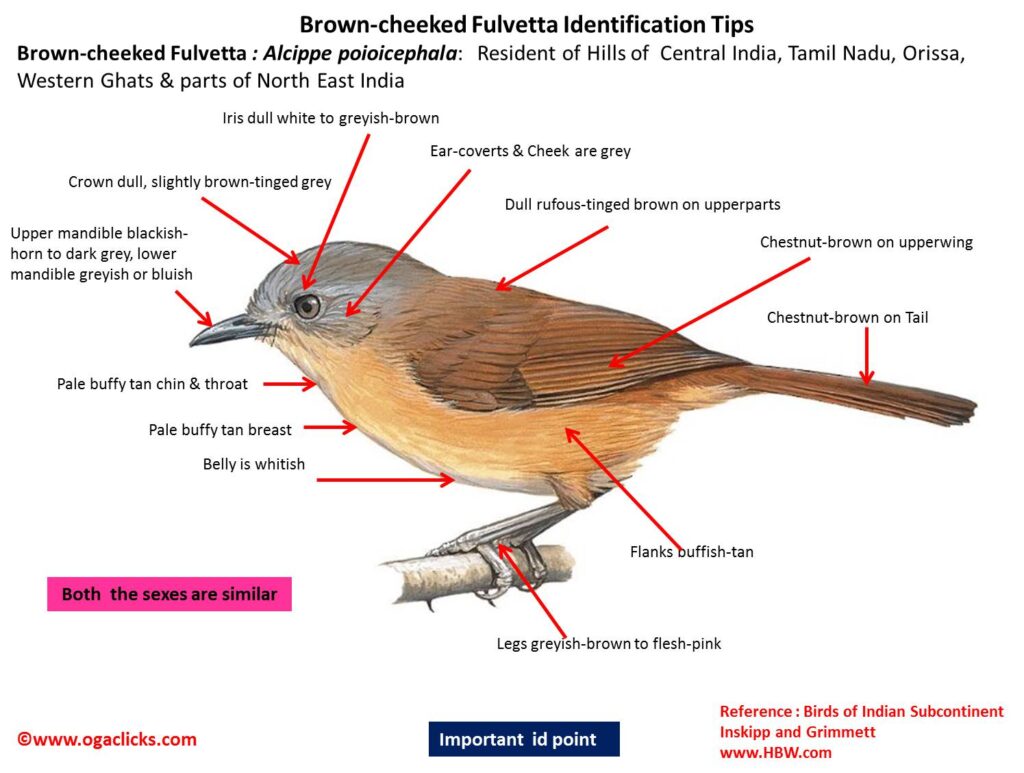
Brown-cheeked Fulvetta Alcippe poioicephala
Etymology :
- Alcippe : Greek Mythology -Alcippe, daughter of Aries the god of war.
- Poioicephala : Greek word phaios dusky, brown; kephalos-headed.
Vernacular Names: Cachar: Dao-pere-gadeba, Guj: Seetimar laledo, Sitimar laledi, Te: Chitkaruvi, Mal: Kana chilappan, Mar: Shitimar Ranbhai
Distribution in India: Resident of hills of peninsular India and North East Indian hills.
Description: Size of 14-15 cm. It is a large “nun-babbler” with greyish-buff head side, distinctly buff underparts; lacks white eyering. The nominate race has crown dull, slightly brown-tinged grey, shading to dull rufous-tinged brown on upperparts, with stronger chestnut-brown on upperwing and tail; lores, superciliary area, ear-coverts, cheek and neck side a shade paler than crown; chin, submoustachial area and underparts very pale buffy tan, belly whitish-buff, flanks buffish-tan; iris dull white to greyish-brown, sometimes brown; upper mandible blackish-horn to dark grey, lower mandible greyish or bluish; legs greyish-brown to flesh-pink.
Habitat: It is found in bushes and small trees in evergreen and mixed moist deciduous forest, teak, secondary growth, sholas, mixed bamboo-jungle, scrub, occasionally gardens. Found from 855 m to 2100 m.
Food Habits: It eats ants and other insects and nectar. It forages in middle storey and undergrowth but also ascends to canopy. Often forms nucleus of mixed-species feeding flocks.
Breeding Habits: They breed in Jan-Nov in India. The nest is a roughly built compact deep cup, sometimes almost cone-shaped, made of green moss, dead leaves, grasses, grass roots, moss roots, rootlets, plant fibers and fine twigs, sometimes plastered with cobweb, lichen or wool, lined with black moss roots, fern roots, and rootlets, placed above ground in bush, sapling, bamboo or fern. They lay a clutch of 2-3 eggs. The incubation is done by both parents for a period of 2 weeks. The fledging period is 2 weeks. The young fed by both parents.